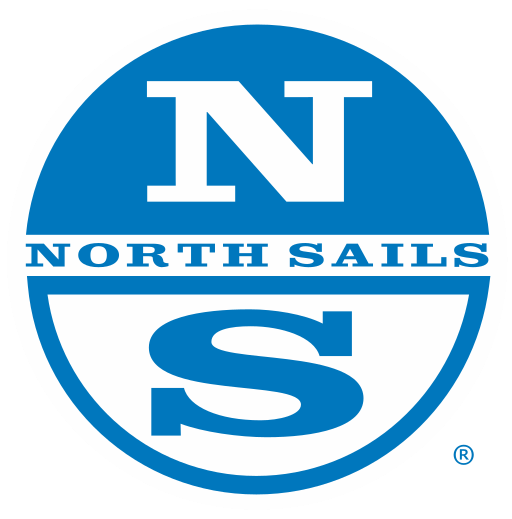By Mike Ingham #3969 (This article originally appeared in the 2019 December/January issue of the Bagpipe.)
The Thistle Midwinters West were held in the Pacific Ocean off of San Diego, and each morning, surfers were eagerly launching off of nearby Sunset Cliffs. Surf’s up! Great for them, challenging for us. We sailed two days of clinic, then raced three days, all in significant Pacific Ocean swells. That gave us five days to figure it out, and we learned some valuable lessons.
Though not mountains, they were large, fast-moving hills. In the troughs we could only see the top half of another boat’s sail plan, and there was no hope of spotting a mark unless the mark and we were both on a crest. Going fast in these rollers was further complicated by their direction. On port tack, they came from the windward side. On starboard, we sailed directly into them. If that were not enough, much of the regatta was in 7 kts — not quite enough to power through the rollers.
Waves on starboard tack
Starboard tack was like a roller coaster, with the waves coming at us bow-on. Climbing the hill was slow. It felt we were inching along, like the roller coaster car was being towed up a long incline. Then, finally at the crest, the tow chain would let go and we’d accelerate down the backside. On the climb, the apparent wind shifted aft but then shot forward as we rode down the backside.
Waves on port tack
Port tack was a whole different ball game. No more roller coaster ride; instead, the waves lifted us up from the side, then set us down a half boat length to leeward. Over the crest, the opposite happened—the backside of the wave pushed us directly sideways upwind. That resulted in huge apparent wind changes in both strength and direction. As the wave moved us to leeward, we must have been moving downwind almost as fast as the wind was blowing because the sails collapsed. Then pressure would come back at the crest of the wave and, for a very short time, we sailed in the true wind speed and direction. Then, on the backside, we surfed to windward and were in full-hike mode, depowering in the huge apparent lift/ pressure increase. It was an odd feeling cycling through such radical differences every swell.
Summing up the apparent wind strength and direction changes on each tack
| Tack | Wave Direction | Up Swell | Down Swell |
|---|---|---|---|
| Port | Port side | Header/ decrease in pressure | Lift/ significant increase in pressure |
| Starboard | In front | Lift/ same pressure | Header/ decrease in pressure |
Solution on both tacks
The physics for each tack was quite different, and the difference in apparent wind speed and direction more extreme on port than on starboard. Yet, oddly enough, the solution on each tack was the same: hold steady at a neutral course while adjusting sails and moving body weight. Port tack required extreme body movements with each massive apparent wind change. Often we went from full hike in the puff/ lift to diving to leeward to keep the boat from tipping to windward. On port tack, we did the same thing, but it was more subtle.
What didn’t work
It was tempting to try and bear off to fill the jib, but regardless of which tack we were on, when we experimented with bearing off, no matter how far we bore off, the jib would never fill. The result was loss of height with no forward gain. Likewise, when the apparent wind shifted aft and the pressure increased, it was tempting to go high. But every time we tried that, I could not bear off fast enough to get back on track and ended up stuck high and slow.
Importance of constant trimming
But trimming constantly to match the changes was effective. As the apparent wind shifted aft, we eased the sails to match. When the apparent wind shifted forward, we over-trimmed a little, but there was nothing more to do than wait a few more seconds until the apparent breeze came back, refilling the sails.
Lessons learned
I expect if there were a significant difference in the nature of the waves, we might have handled them differently. We clearly learned that it’s never effective to bear off when the sails luff from a sudden apparent wind change. If you have a very nimble boat and the waves are slower, it might work to head up as the wind shifts aft. But for us, the real lesson we learned about sailing in large rollers is to steer more or less straight and use body weight and sail trim to adjust to apparent wind changes.





